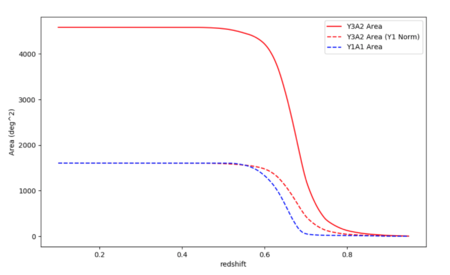January 23, 2019
Cluster Correlation Scale
Cluster Correlation Scale
Overview of RedMaPPer Y3 Data
The RedMaPPer Y3 data is divided into two types of catalog: volume-limited and full. The volume-limited catalog is limited in redshift as shown in Figure 1. The full catalog does not apply the same redshift limit. For either type, you can then choose between a catalog which include clusters of richness greater than 5, or richness greater than 20.

I am currently using the Volume Limited catalog with lambda > 5. The full catalog contains ~300,000 clusters. The part of the catalog overlapping with the ACT y-map region contains ~80,000 clusters.
Motivation for Finding the Correlation Scale
When I plotted all the cluster positions and smoothed them to a four arcminute beam, they were so separated that this did not create the nearly smooth number-density map that we want. Furthermore, if I cut the catalog down into small redshift slices, the clusters are even more sparse. Therefore, I want to know what the optimal scale is to be smoothing on, to create a useful orientation map which will contain relevant information about super-clustering. One way to figure out the best scale is to find the cluster correlation scale: at what distance are clusters most clustered? Another question I have is: what is the ideal distance to slice the cluster sample at? A comoving distance of 30 Mpc? 100? Larger? Examining the cluster correlation function for various slices in redshift will tell us the information on super-clustering scales that we need.